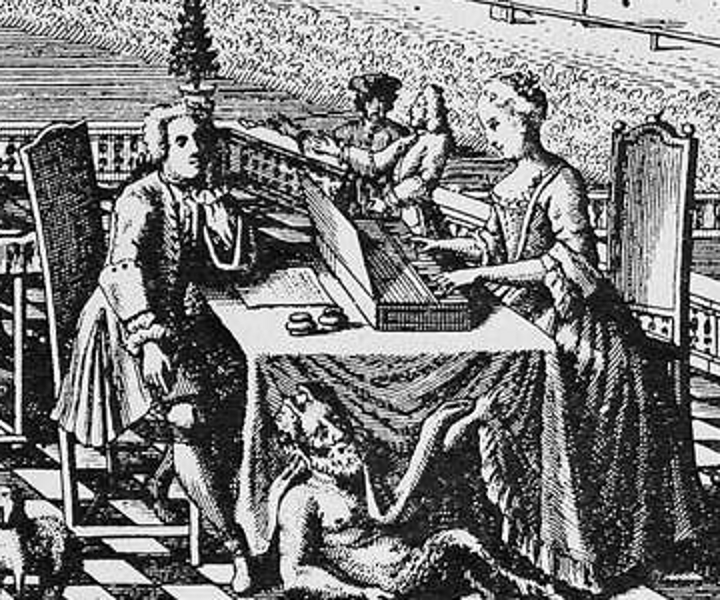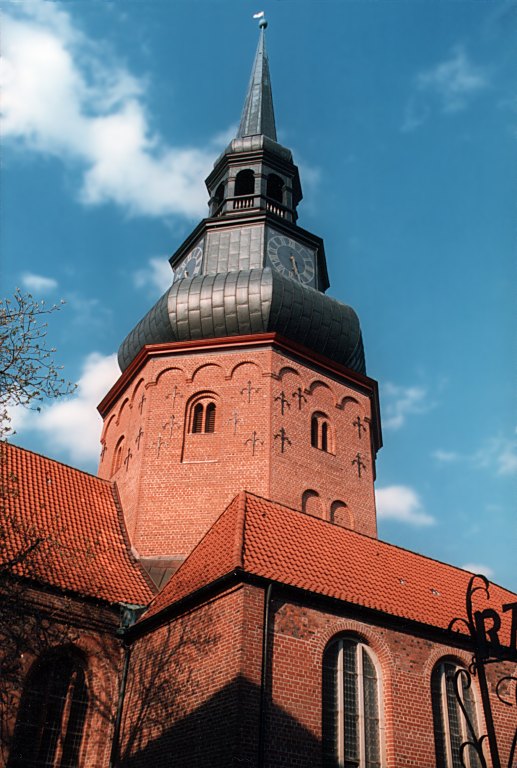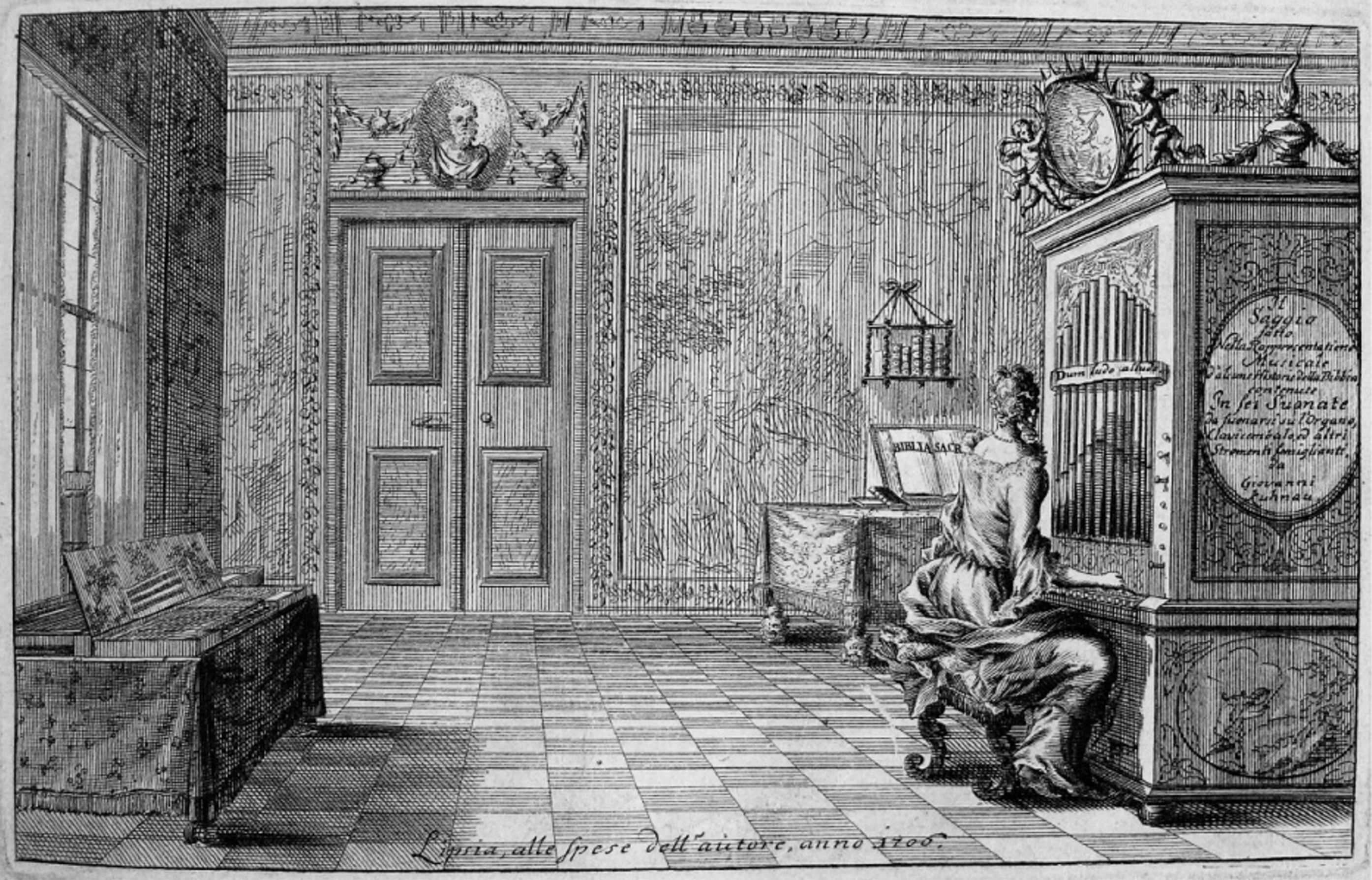|
Clavier-Übung III
The ''Clavier-Übung III'', sometimes referred to as the ''German Organ Mass'', is a collection of compositions for organ by Johann Sebastian Bach, started in 1735–36 and published in 1739. It is considered Bach's most significant and extensive work for organ, containing some of his most musically complex and technically demanding compositions for that instrument. In its use of modal forms, motet-style and canons, it looks back to the religious music of masters of the Prima pratica, stile antico, such as Girolamo Frescobaldi, Frescobaldi, Giovanni Pierluigi da Palestrina, Palestrina, Antonio Lotti, Lotti and Antonio Caldara, Caldara. At the same time, Bach was forward-looking, incorporating and distilling modern baroque musical forms, such as the French-style chorale. The work has the form of an ''Organ Mass'': between its opening and closing movements—the #Prelude and fugue BWV 552, prelude and "St Anne" fugue in E major, BWV 552—are 21 chorale preludes, BWV 669–689, se ... [...More Info...] [...Related Items...] OR: [Wikipedia] [Google] [Baidu] |
Johann Sebastian Bach
Johann Sebastian Bach (German: Help:IPA/Standard German, [ˈjoːhan zeˈbasti̯an baχ]) ( – 28 July 1750) was a German composer and musician of the late Baroque music, Baroque period. He is known for his prolific output across a variety of instruments and forms, including the orchestral ''Brandenburg Concertos''; solo instrumental works such as the Cello Suites (Bach), cello suites and Sonatas and Partitas for Solo Violin (Bach), sonatas and partitas for solo violin; keyboard works such as the ''Goldberg Variations'' and ''The Well-Tempered Clavier''; organ works such as the ' and the Toccata and Fugue in D minor, BWV 565, Toccata and Fugue in D minor; and choral works such as the ''St Matthew Passion'' and the Mass in B minor. Since the 19th-century Reception of Johann Sebastian Bach's music, Bach Revival, he has been widely regarded as one of the greatest composers in the history of Western music. The Bach family had already produced several composers when Joh ... [...More Info...] [...Related Items...] OR: [Wikipedia] [Google] [Baidu] |
Chorale Prelude
In music, a chorale prelude or chorale setting is a short liturgical composition for pipe organ, organ using a chorale tune as its basis. It was a predominant style of the German Baroque music, Baroque era and reached its culmination in the works of Johann Sebastian Bach, J.S. Bach, who wrote 46 (with a 47th unfinished work, unfinished) examples of the form in his Orgelbüchlein, along with multiple other works of the type in List of organ compositions by Johann Sebastian Bach#Chorale Preludes, other collections. Function The precise liturgical function of a chorale Prelude (music), prelude in the Baroque period is uncertain and is a subject of debate. One possibility is that they were used to introduce the hymn about to be sung by the congregation, usually in a Protestant, and originally in a Lutheran, church. This assumption may be valid for the shorter chorale preludes (Bach's setting of 'Liebster Jesu, wir sind hier, BWV 731, for example), but many chorale preludes are very lo ... [...More Info...] [...Related Items...] OR: [Wikipedia] [Google] [Baidu] |
Protestant Reformation
The Reformation, also known as the Protestant Reformation or the European Reformation, was a time of major theological movement in Western Christianity in 16th-century Europe that posed a religious and political challenge to the papacy and the authority of the Catholic Church. Towards the end of the Renaissance, the Reformation marked the beginning of Protestantism. It is considered one of the events that signified the end of the Middle Ages and the beginning of the early modern period in Europe. The Reformation is usually dated from Martin Luther's publication of the '' Ninety-five Theses'' in 1517, which gave birth to Lutheranism. Prior to Martin Luther and other Protestant Reformers, there were earlier reform movements within Western Christianity. The end of the Reformation era is disputed among modern scholars. In general, the Reformers argued that justification was based on faith in Jesus alone and not both faith and good works, as in the Catholic view. In the ... [...More Info...] [...Related Items...] OR: [Wikipedia] [Google] [Baidu] |
Reichsthaler
The ''Reichsthaler'' (; modern spelling Reichstaler), or more specifically the ''Reichsthaler specie'', was a standard thaler silver coin introduced by the Holy Roman Empire in 1566 for use in all German states, minted in various versions for the next 300 years, and containing 25–26 grams fine silver. ''North German thaler, Reichsthaler'' was also the name of a currency unit worth less than the ''Reichsthaler specie'' introduced by several North German states from the 17th century; discussed separately under ''North German thaler''. Several old books confusingly use the same term ''Reichsthaler'' for the Speciesthaler, specie silver coin as well as the currency unit. This is disambiguated by referring to the full-valued coin as the ''Speciesthaler, Reichsthaler specie'' and the lower-valued currency unit as the ''Reichsthaler currency (courant, kurant)''. History The ''Reichsthaler'' – literally, the ''dollar of the realm'' – was the most successful standard silver coin re ... [...More Info...] [...Related Items...] OR: [Wikipedia] [Google] [Baidu] |
Overture In The French Style, BWV 831
The ''Overture in the French style'', BWV 831, original title ''Ouvertüre nach Französischer Art'', also known as the ''French Overture'' and published as the second half of the '' Clavier-Übung II'' in 1735 (paired with the '' Italian Concerto''), is a suite in B minor for a two-manual harpsichord written by Johann Sebastian Bach. Terminology and structure The term ''overture'' refers to the fact that this suite starts with an overture movement, and was a common generic name for French suites (his orchestral suites were similarly named). This "overture" movement replaces the allemande found in Bach's other keyboard suites. Also, there are optional dance movements both before and after the Sarabande. In Bach's work optional movements usually occur only after the sarabande. All three of the optional dance movements are presented in pairs, with the first one repeated after the second, but without the internal repeats. Also unusual for Bach is the inclusion of an extra moveme ... [...More Info...] [...Related Items...] OR: [Wikipedia] [Google] [Baidu] |
Italian Concerto, BWV 971
The ''Italian Concerto'', BWV 971, originally titled ''Concerto nach Italiænischen Gusto'' (''Concerto in the Italian taste''), is a three-movement concerto for two- manual harpsichord solo composed by Johann Sebastian Bach and published in 1735 as the first half of Clavier-Übung II (the second half being the ''French Overture''). The ''Italian Concerto'' has become popular among Bach's keyboard works, and has been widely recorded both on the harpsichord and piano. Context An Italian concerto relies upon the contrasting roles of different groups of instruments in an ensemble; Bach imitates this effect by creating contrasts using the ''forte'' and ''piano'' manuals of a two-manual harpsichord throughout the piece. Related works Along with the ''French Overture'' and some of the ''Goldberg Variations'', this is one of the few works by Bach which specifically require a 2-manual harpsichord. However, it is not unusual in being a solo keyboard work based on Italian concertos. Lo ... [...More Info...] [...Related Items...] OR: [Wikipedia] [Google] [Baidu] |
Johann Sigismund Scholze
Johann Sigismund Scholze alias Sperontes (20 March 1705 in Lobendau bei Liegnitz (today Lubiatów near Złotoryja) 28 September 1750 in Leipzig) was a Silesian music anthologist and poet. Life Little is known about the life of Scholze. He was the son of a clerk, and attended school in Liegnitz Legnica (; , ; ; ) is a city in southwestern Poland, in the central part of Lower Silesia, on the Kaczawa River and the Czarna Woda. As well as being the seat of the county, since 1992 the city has been the seat of the Diocese of Legnica. L ... until the beginning of his studies in Leipzig. In 1729 he was in Leipzig, where on 3 January, he got married with the widow from Halle, with whom he had begun a relationship. The children died young. Only one survived him. His wife died on 12 February 1738. His own funeral in poorer shape was on 30 September 1750. Stolze published under the pseudonym of Sperontes. We owe the discovery of the real identity of the poet to the musicologist Phili ... [...More Info...] [...Related Items...] OR: [Wikipedia] [Google] [Baidu] |
Georg Andreas Sorge
Georg Andreas Sorge (21 March 1703 in Mellenbach, Thuringia – 4 April 1778) was an organist, composer, and, most notably, theorist. His references to Johann Sebastian Bach show that they were friends, and he composed three fugues for organ on the name BACH ( BWV Anh. 107, 108 and 110). He joined Lorenz Christoph Mizler's Corresponding Society of Musical Sciences in 1747, just a month after Bach himself. Sorge's writings on thorough-bass and harmony are very competent, and his theoretical grasp of unequal temperaments excelled even that of J. G. Neidhardt (though still taking comma as an indivisible unit of measure. He cited Bach as 'witness' that regular -comma meantone temperament was inadequate to 'modern' harmony, and he dismissed Johann Philipp Kirnberger's schemes of temperament as 'no good'.Boyd, Malcolm. ''Oxford Composer Companions: J.S. Bach'', Oxford University Press, 1999, p. 456 See also *Schübler Chorales ' ( 'six chorales of diverse kinds, to be played ... [...More Info...] [...Related Items...] OR: [Wikipedia] [Google] [Baidu] |
Vincent Lübeck
Vincent Lübeck (c. September 1654 – 9 February 1740) was a German composer and organist. He was born in Padingbüttel and worked as organist and composer at Stade's St. Cosmae et Damiani (Stade), St. Cosmae et Damiani (1675–1702) and Hamburg's famous St. Nikolai, Hamburg, St. Nikolai (1702–1740), where he played one of the largest contemporary organs. He enjoyed a remarkably high reputation in his lifetime, and had numerous pupils, among which were two of his sons. Despite Lübeck's longevity and fame, very few compositions by him survive: a handful of organ ''praeludia'' and chorales in the German organ schools, North German style, a few cantatas and several pieces for harpsichord, some of which were published during the composer's lifetime. Of his works, the organ pieces are the most important: influenced by Dieterich Buxtehude and Johann Adam Reincken, Lübeck composed technically and artistically sophisticated works, with frequent virtuosic passages for pedal keyboard, p ... [...More Info...] [...Related Items...] OR: [Wikipedia] [Google] [Baidu] |
Johann Philipp Krieger
Johann Philipp Krieger (also ''Kriger'', ''Krüger'', ''Krugl'', and ''Giovanni Filippo Kriegher''; baptised 27 February 1649; died 7 February 1725) was a German people, German Baroque composer and organist. He was the elder brother of Johann Krieger. Life Early years The Krieger brothers came from a Nuremberg family of Rug making, rugmakers. According to Johann Mattheson's ''Grundlage einer Ehren-Pforte'', Johann Philipp started studying keyboard playing at age 8, with Johann Drechsel (a pupil of the celebrated Johann Jakob Froberger) and other instruments at around the same time, with Gabriel Schütz. He was apparently a gifted student, displaying absolute pitch and a feeling for keyboard music: according to Mattheson, already after a year of studies he was able to impress large audiences and was composing attractive arias. Johann Philipp soon left Nuremberg for Copenhagen, where he spent some four or five years, studying organ playing with Johann Schröder (composer), Johann ... [...More Info...] [...Related Items...] OR: [Wikipedia] [Google] [Baidu] |
Johann Kuhnau
Johann Kuhnau (; 6 April 16605 June 1722) was a German polymath, known primarily as a composer today. He was also active as a novelist, translator, lawyer, and music theorist, and was able to combine these activities with his duties in his official post as Thomaskantor in Leipzig, which he occupied for 21 years. Much of his music, including operas, masses, and other large-scale vocal works, is lost. His reputation today rests on his ''Biblical Sonatas'', a set of programmatic keyboard sonatas published in 1700, in which each sonata depicted in detail a particular story from the Bible. After his death, Kuhnau was succeeded as Thomaskantor by Johann Sebastian Bach. Biography Much of the biographical information on Kuhnau is known from an autobiography published by Johann Mattheson in 1740 in his ''Grundlage einer Ehrenpforte''. Kuhnau's Protestant family were originally from Bohemia, and their name was Kuhn. Kuhnau was born in Geising, present-day Saxony. His musical talents wer ... [...More Info...] [...Related Items...] OR: [Wikipedia] [Google] [Baidu] |






